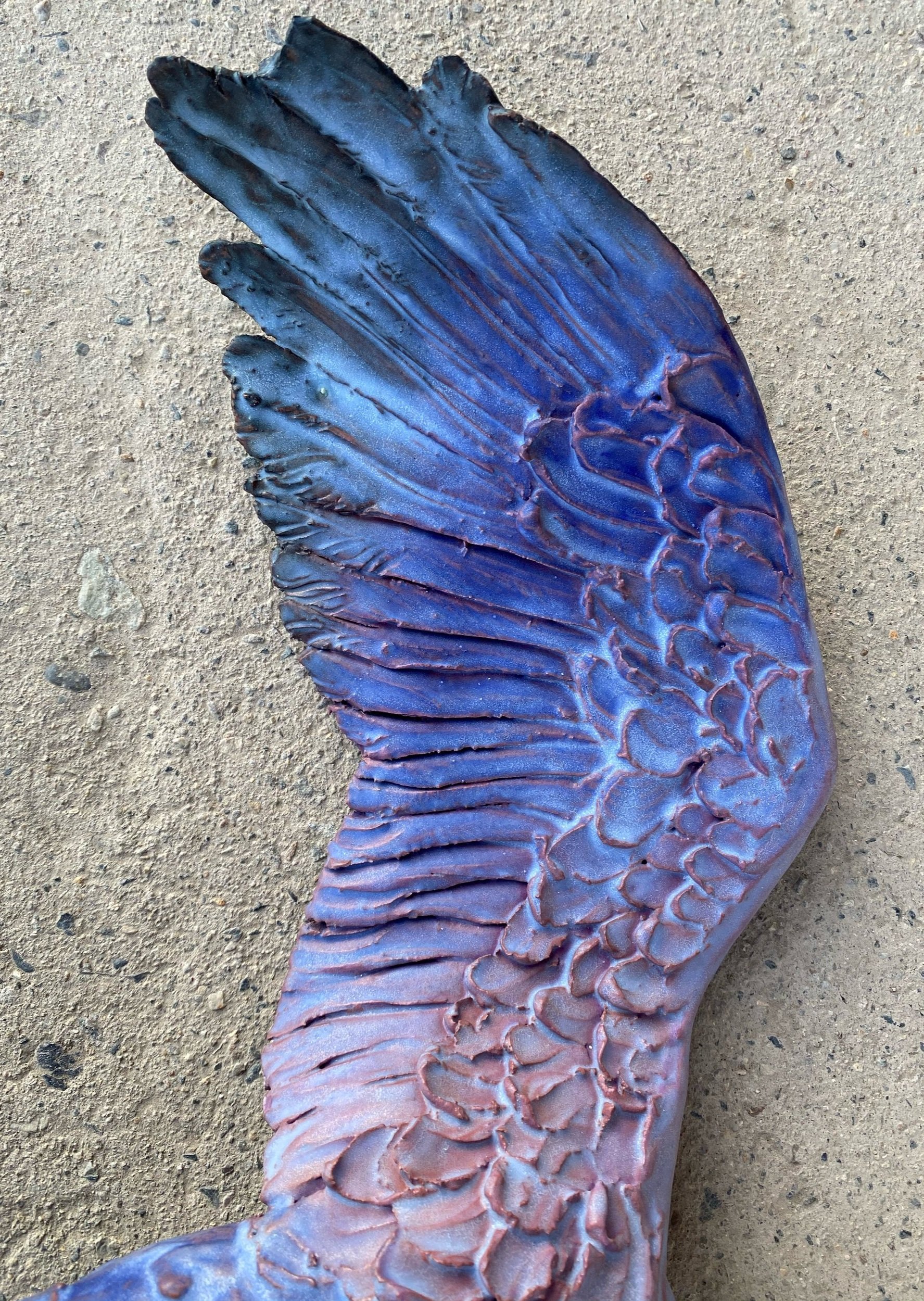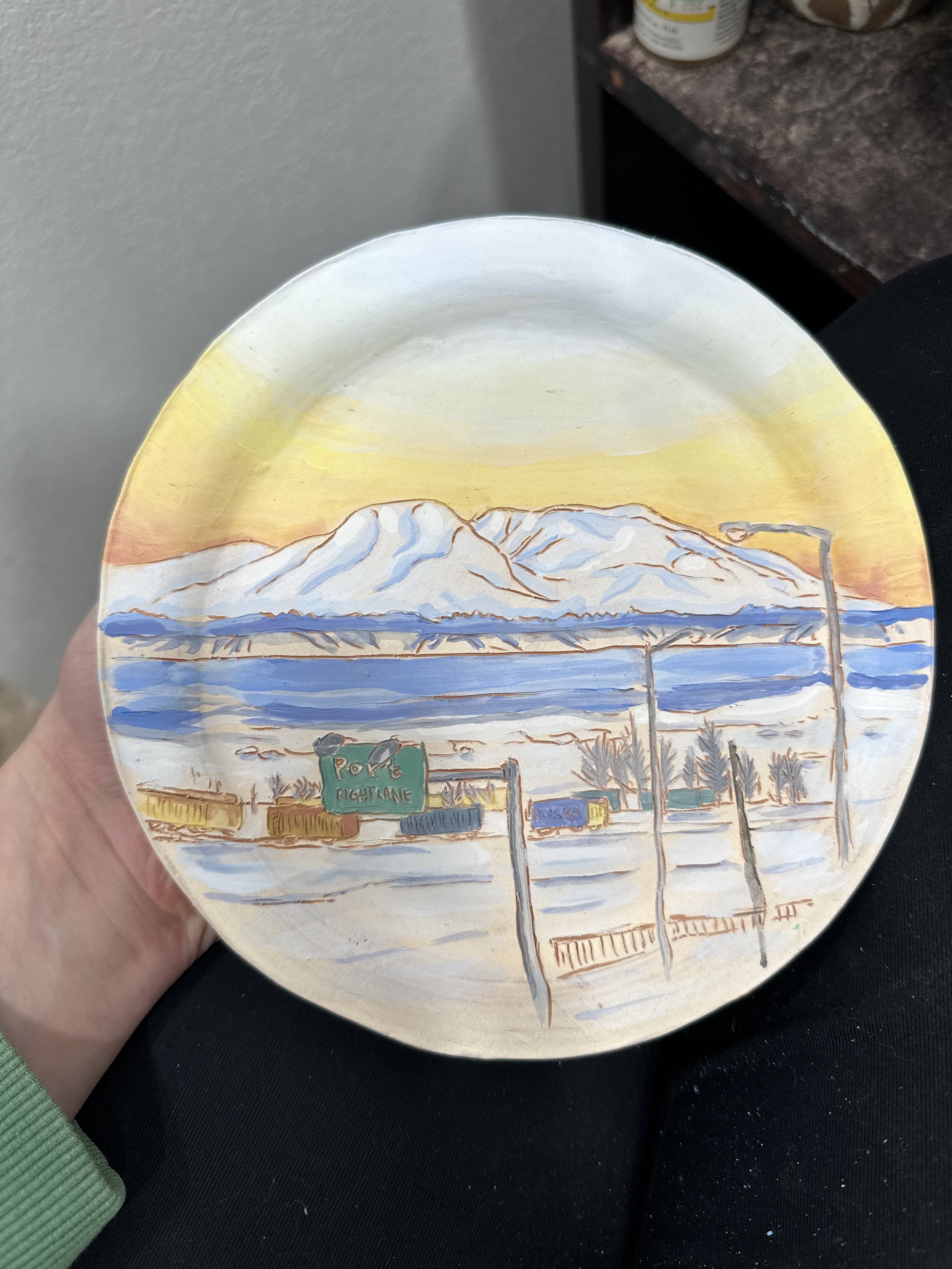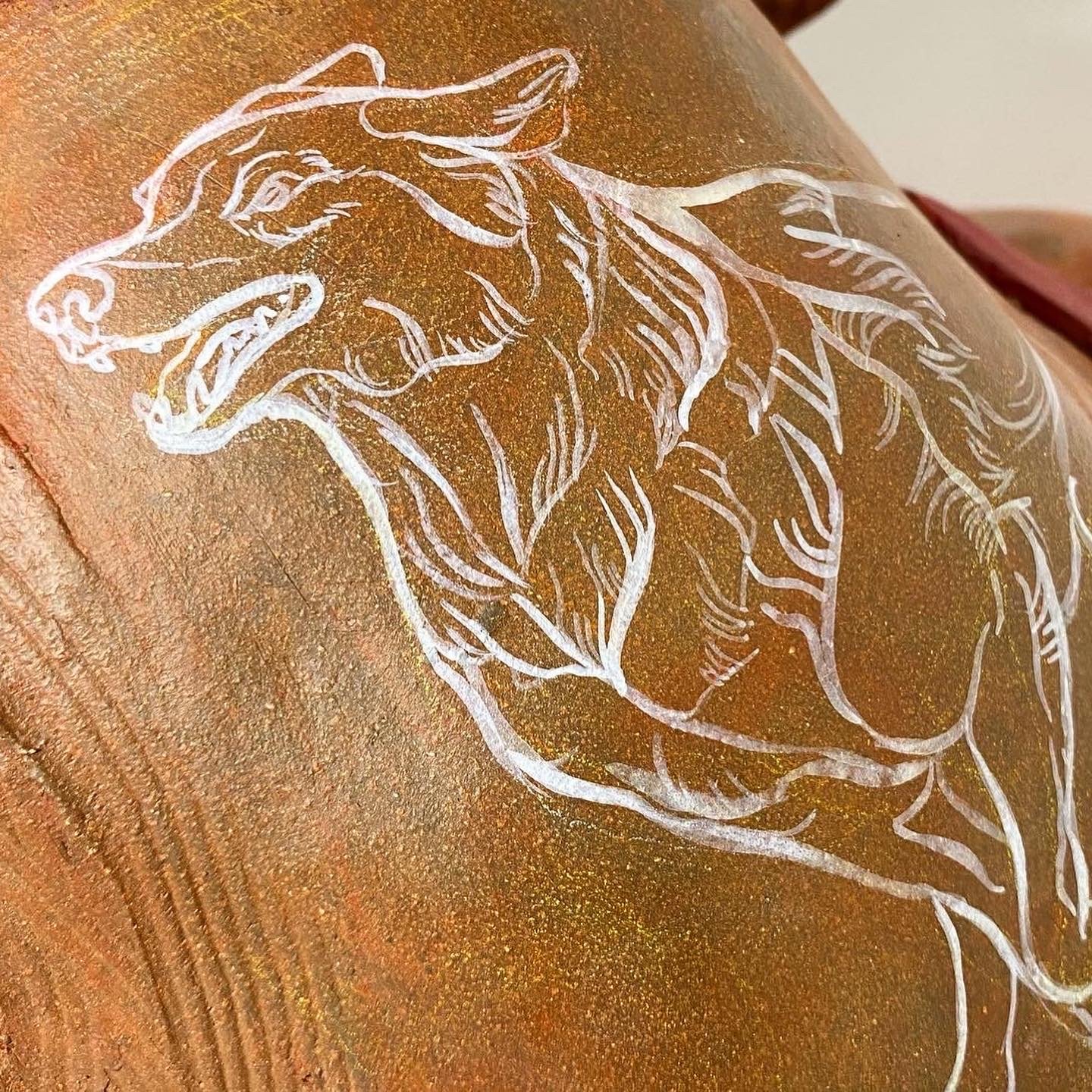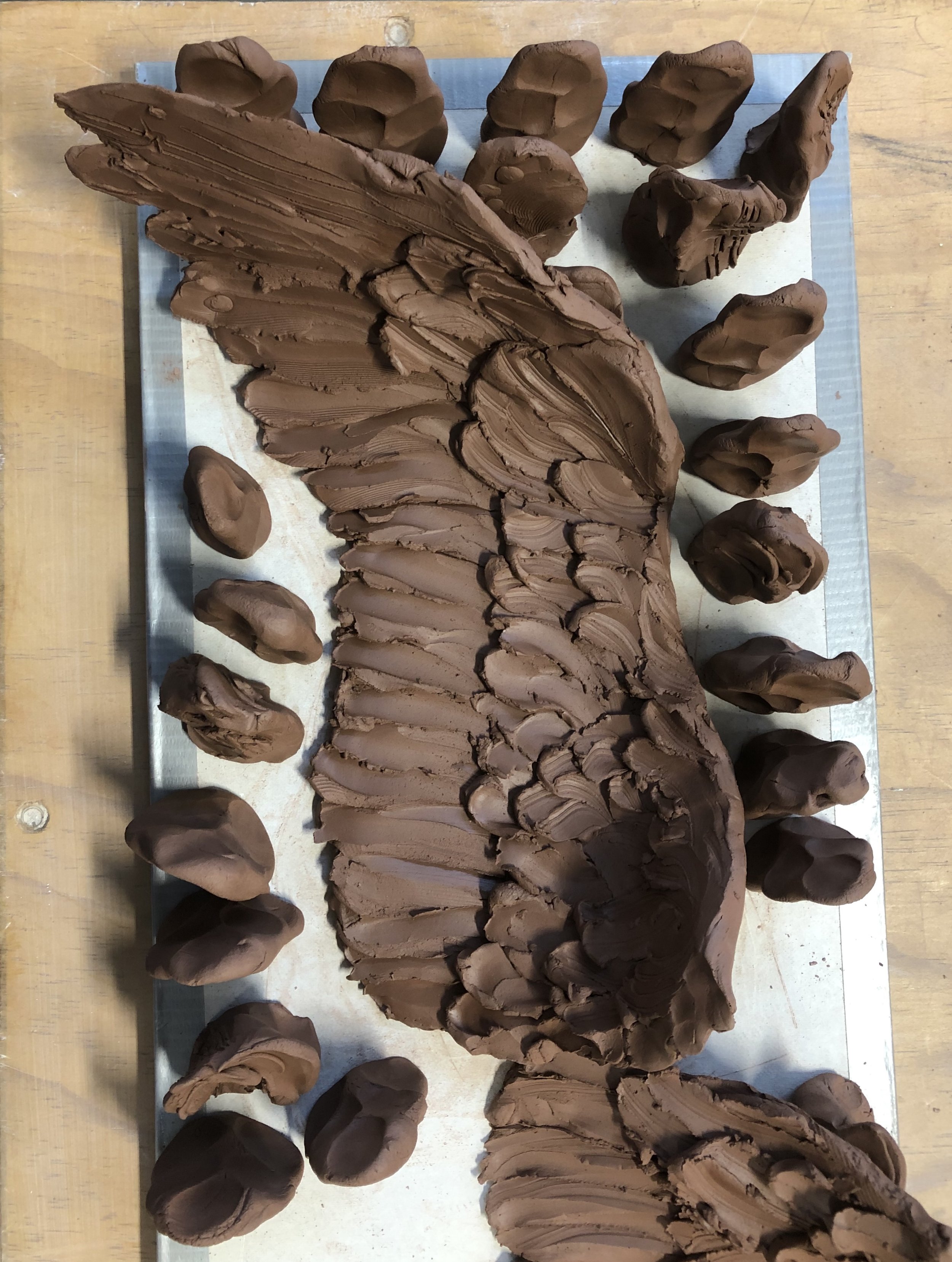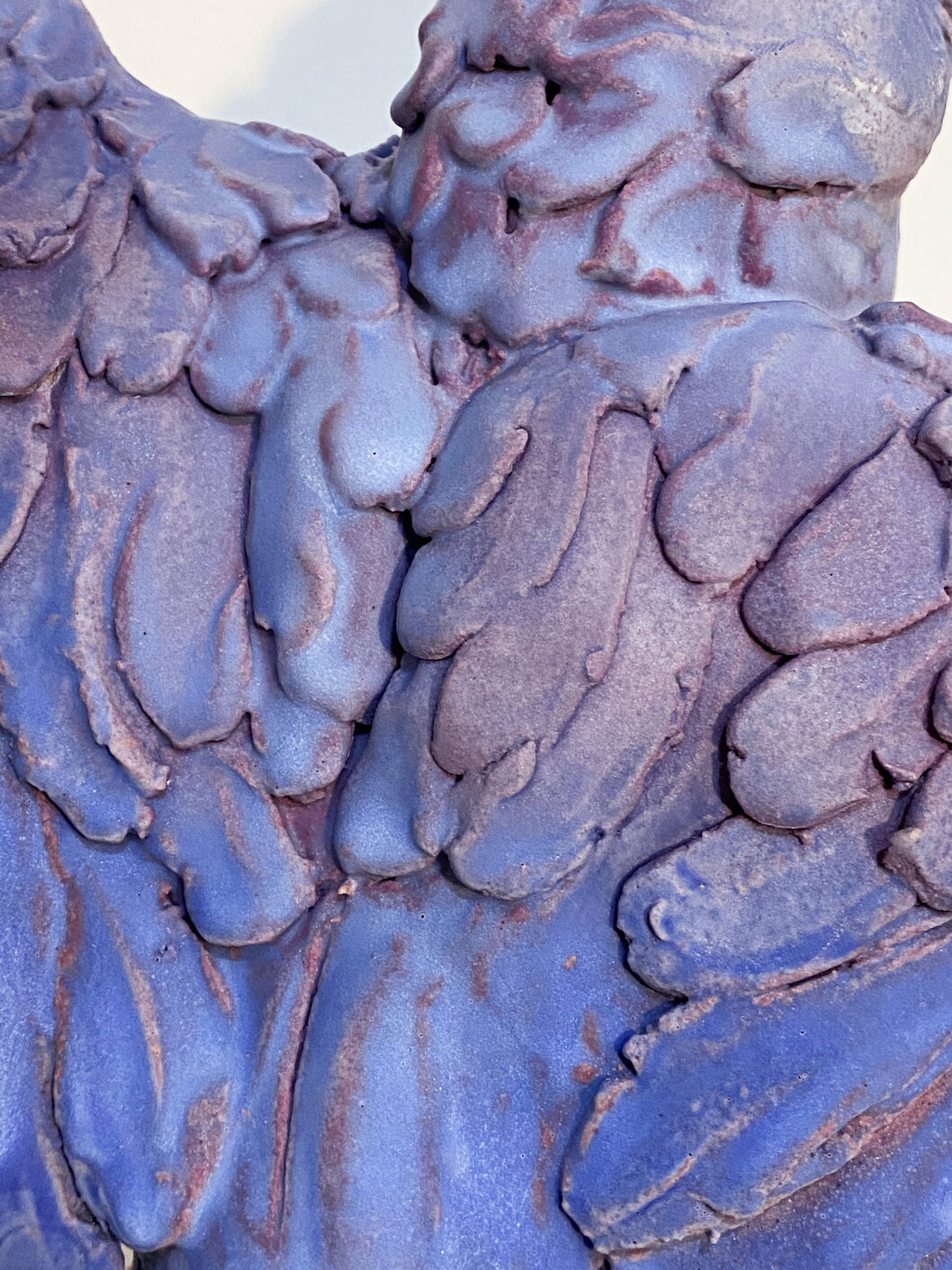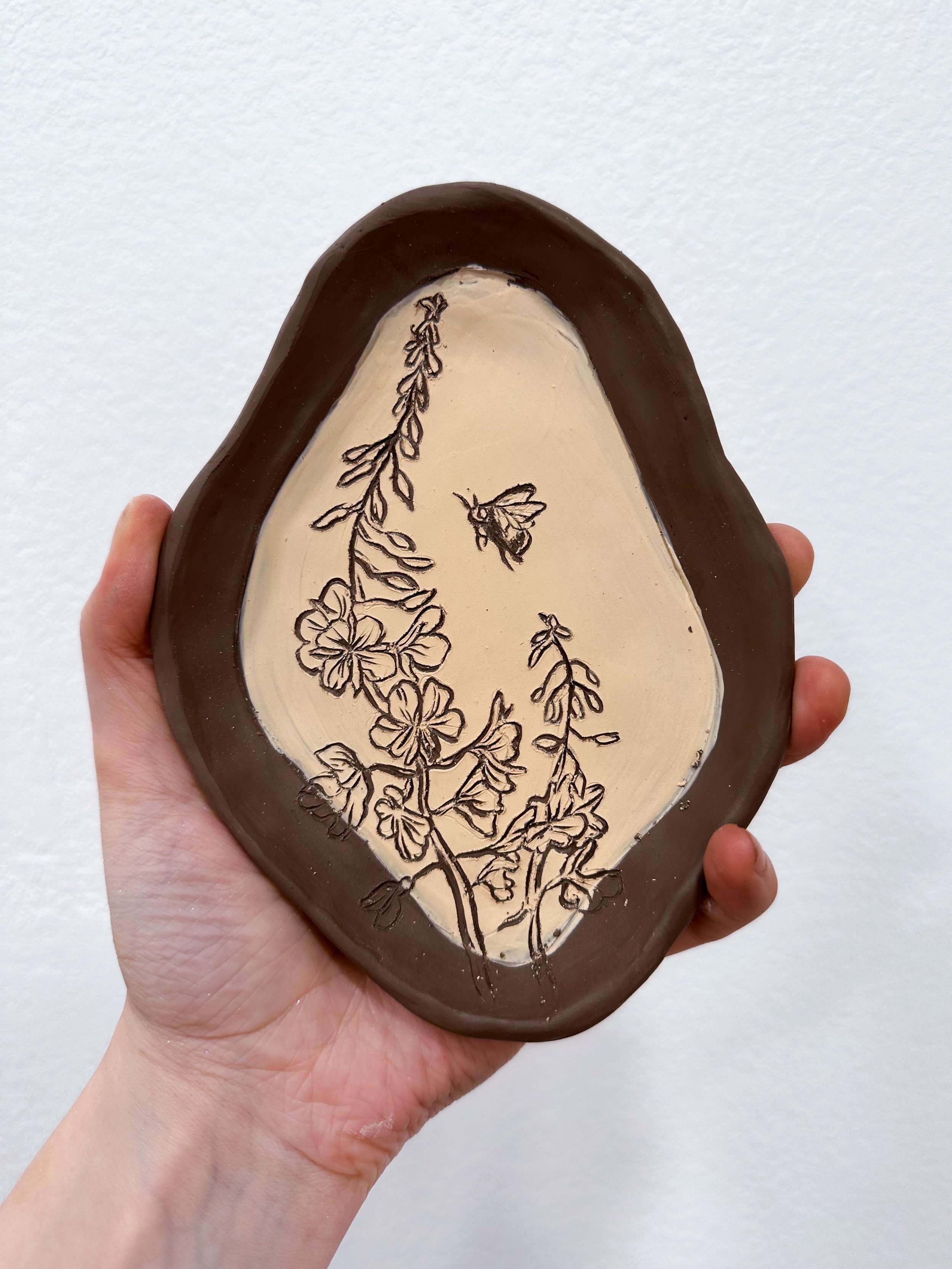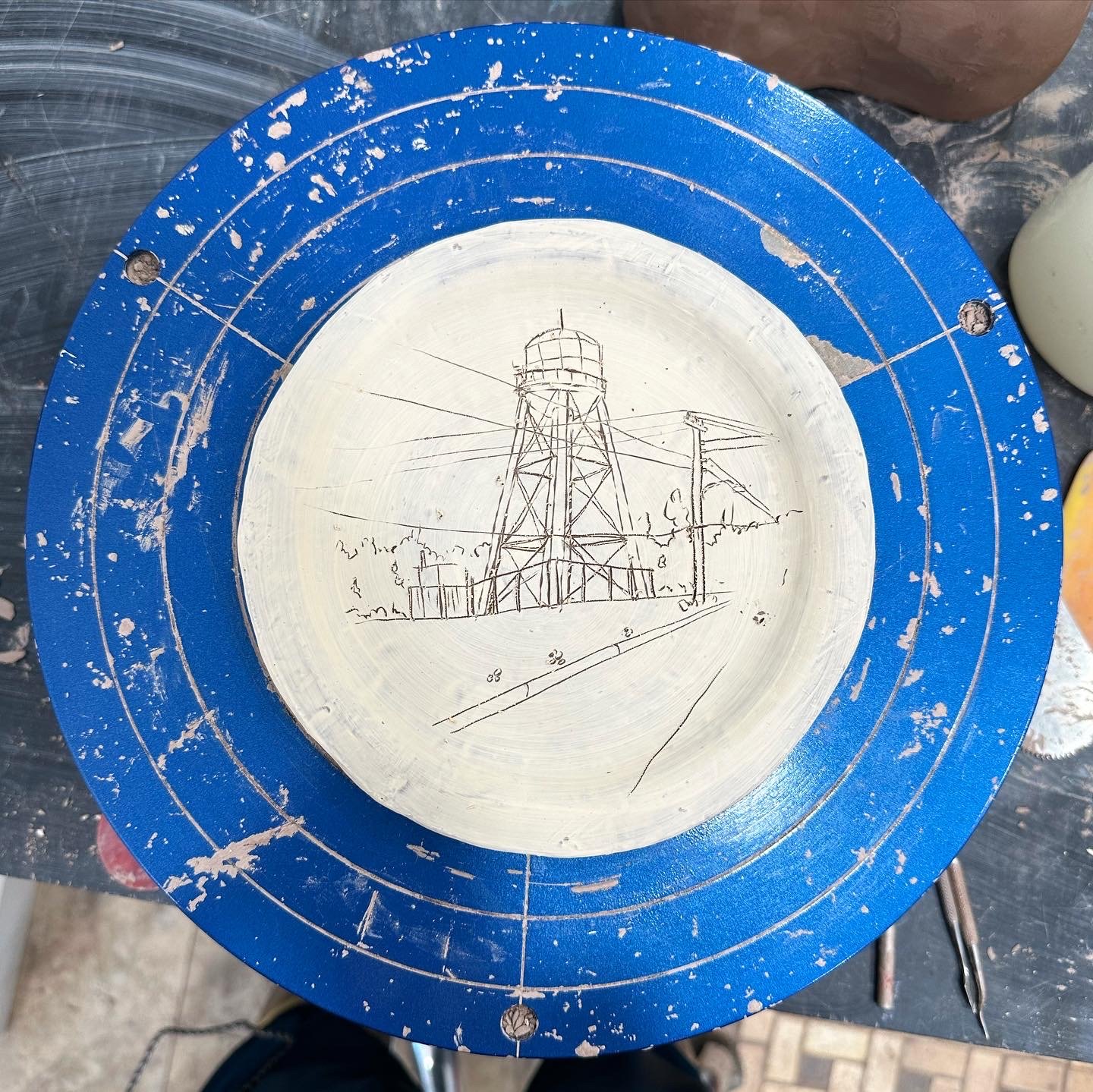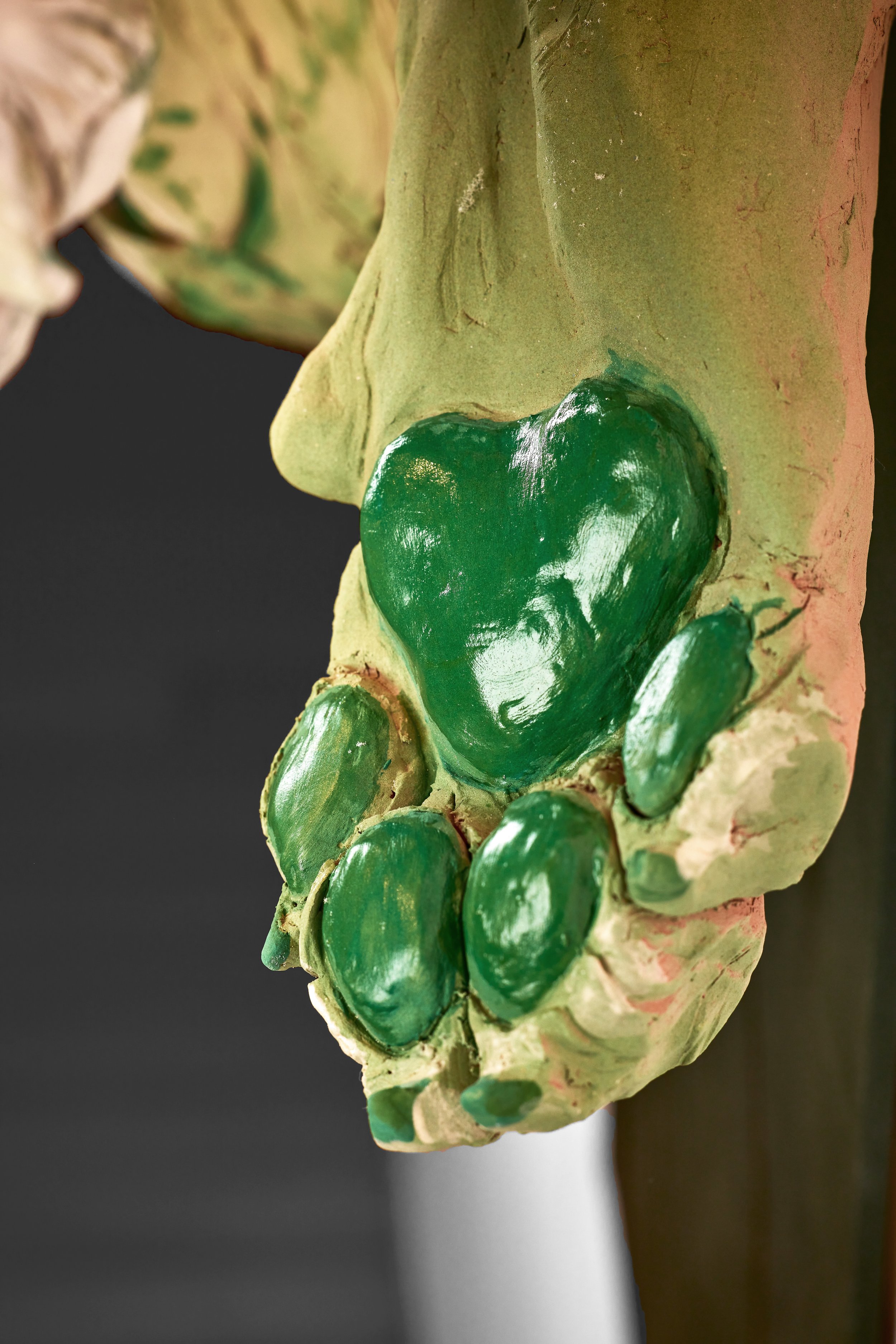Designing the Surface
I use color and texture to create tactile experiences, not only steering the mood of a piece, but emphasizing narrative.
Ceramic glazes and underglazes create totally unique textures unachievable with paint. However, I will also use acrylic, oil, watercolor, stains, and oils, whatever materials are available to achieve the final intended look.
UNDERGLAZE
I use a drop gravity spray gun to apply an even, thick base coat of underglaze to all my pieces before going in with the details (spots, pupils, etc.). Spraying also helps achieve smooth transitions between colors without brush strokes. Check the video below for how I underglazed the owl.
Underglazes can also be used much like watercolor.
GLAZE
My goal when using glaze is to enhance color and create atmosphere. Underglaze can look dry and paint can look plastic, but satin glazes are inviting and add depth. However, the downside to glaze is that it can cover detail. It’s a delicate balance.
TESTING
Testing glazes is a challenging yet rewarding process. Because I make glazes using raw materials, I am consistent and exact with measurements, how I sieve, application, and the temperature I fire at.
I also test often, casting a wide net of color and surface combinations, layering glazes with underglazes, slips, and engobes. Take notes!
Once I’ve created the desired result, I’ll spray the sculpture- again, using a drop gravity spray gun, with several even coats. For less glaze heavy pieces, I’ll just brush on the accents.
SGRAFFITO
Sgraffito is illustrative and a lot like drawing. I’ll use slip or underglaze, applying to leatherhard clay, then scratching off the surface with a needle tool. See below.
STUDIO TOOLS
Triple Beam Scale
OHAUS 720-S0 TRIPLE BEAM 700 SERIES MECHANICAL CLASSROOM BALANCE, 610 G X .1 G
I use a triple beam because I like to work in small batches, each glaze unique to the piece that I’ve sculpted.
Sieves
I use 80, 100, and 120 mesh sieves. This ensures consistent application when I spray them on using a drop gravity spray gun.Spray Gun
HVLP and Standard Gravity Feed Spray Gun KitAir Compressor
DEWALT Pancake Air Compressor, 6 Gallon, 165 PSIRespirator
3M Grey Reusable P100 All-purpose Safety Mask
RAW MATERIALS LIST
99% Red Iron Oxide
Barium Carbonate
Bentonite
Chrome Oxide
Copper Carbonate
Cobalt Carbonate
Dolomite
EPK
Minspar 200
Frit 3110
Frit 3124
Frit 3134
F-12 (Frit 3134 substitute)
Flint
Gerstley Borate
Green Nickel Carbonate
Kaolin, Grolleg
Kaolin, Glomax
Lithium Carbonate
Mahavir
MS 6264 Victoria Green
MS 6280 Avocado
MS 6306 Vivid Blue
MS 6319 and 6333 and 6392 Lavender
MS 6540 Blue Grey
MS 6600 Best Black
Nepheline Syenite
OM4 Ball Clay
Rutile
Silica 200
Silicon Carbide
Spodumene
Strontium Carb
Talc
Tin Oxide
Whiting
Zinc Oxide
Zircopax

